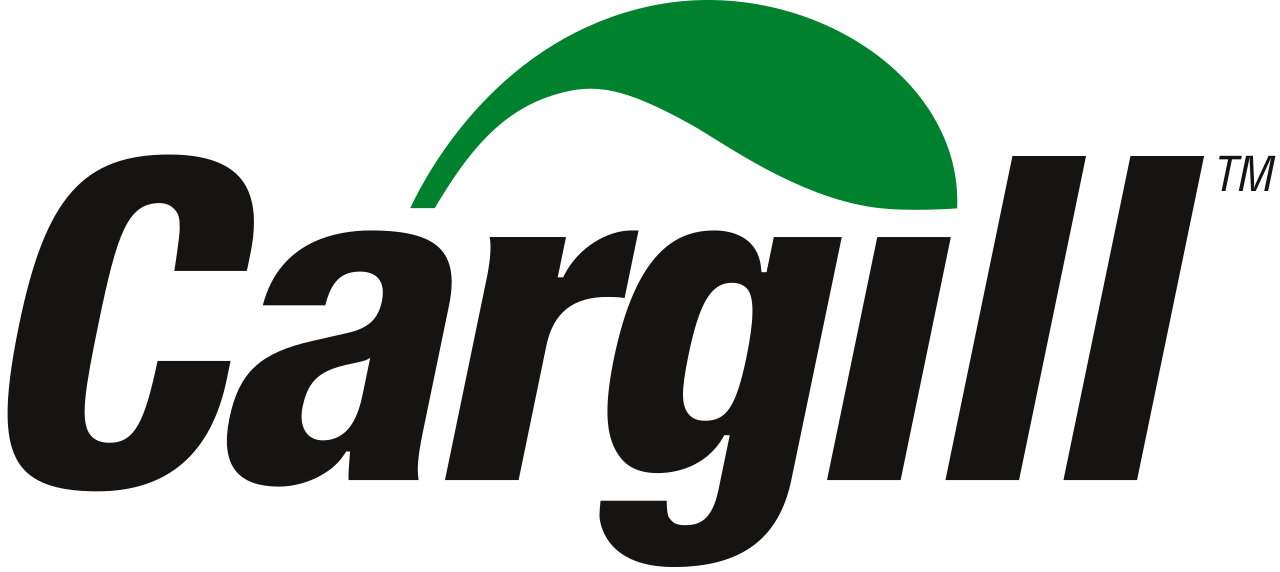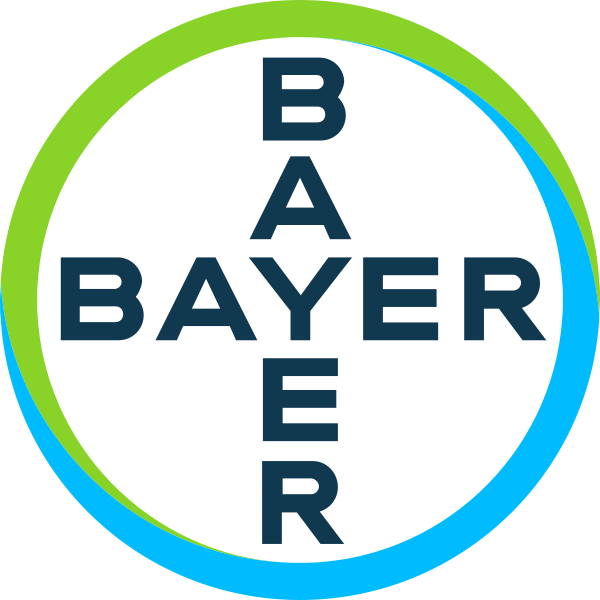Global Aquaculture Fertilizer Market, By Type, By Species Type, By Application, By Distribution Channel, By Region & Segmental Insights Trends and Forecast, 2024 – 2034
- Industry: Agriculture
- Report ID: TNR-110-1226
- Number of Pages: 420
- Table/Charts : Yes
- July, 2024
- Base Year : 2024
- No. of Companies : 10+
- No. of Countries : 29
- Views : 10223
- Covid Impact Covered: Yes
- War Impact Covered: Yes
- Formats : PDF, Excel, PPT
Aquaculture fertilizer is used in the farming of aquatic organisms like fish, shrimp, and algae to enhance growth and productivity. It typically provides essential nutrients that may be lacking in the aquatic environment, such as nitrogen, phosphorus, and potassium. These nutrients support the growth of phytoplankton and other microorganisms, which form the base of the food chain for farmed species.
The aquaculture fertilizer market is experiencing significant growth, driven by increasing demand for sustainable seafood and advancements in aquaculture technology. Key trends include a shift towards organic and bio-based fertilizers due to environmental concerns and regulatory pressures. The adoption of precision fertilization techniques and automated systems enhances nutrient efficiency and minimizes waste, offering new opportunities for market expansion.
Growth drivers include the rising global seafood consumption, technological innovations in fertilizer application, and increasing investments in aquaculture infrastructure. Expanding aquaculture practices in emerging markets contribute to market growth. As the industry evolves, there is a growing focus on integrating eco-friendly practices and optimizing nutrient management to support the sustainable growth of aquatic farming. In Terms of Revenue, the Global Aquaculture Fertilizer Market was Worth US$ 14.5 Mn in 2023, Anticipated to Witness CAGR of 13.6% During 2024 – 2034.
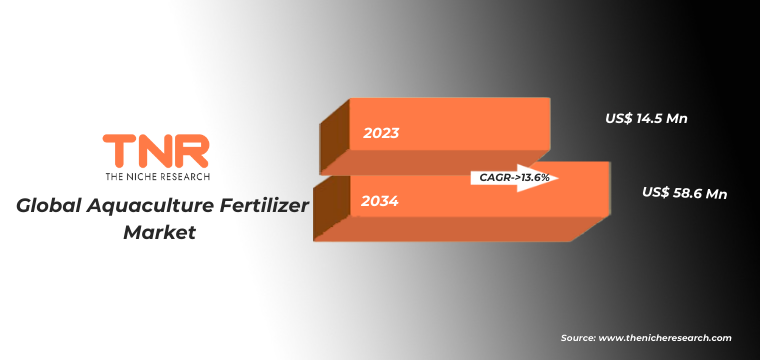
Trends in the Global Aquaculture Fertilizer Market
- Shift Towards Sustainable and Organic Fertilizers: The global aquaculture fertilizer market is increasingly shifting towards sustainable and organic options. This trend is driven by heightened environmental awareness and regulatory pressures aimed at reducing the ecological footprint of aquaculture operations. Organic fertilizers, derived from sources such as seaweed, compost, and fish waste, offer eco-friendly alternatives to synthetic chemicals. These fertilizers not only enhance nutrient availability but also improve soil and water quality, promoting healthier aquatic environments. The growing demand for organic seafood and the need for sustainable aquaculture practices further accelerate this trend. As consumers and regulators emphasize sustainability, aquaculture operations are adopting organic fertilizers to meet market expectations and achieve environmental compliance, creating significant growth opportunities within this segment.
- Adoption of Precision Fertilization Technologies: Precision fertilization involves the use of advanced technologies, such as automated systems and real-time monitoring tools, to optimize the application of nutrients. These technologies enable aquaculture farms to apply fertilizers more efficiently, reducing waste and improving nutrient uptake. Key innovations include sensor-based systems that monitor water quality and nutrient levels, as well as automated dispensing mechanisms that ensure accurate application. This trend enhances the effectiveness of fertilizers, supports sustainable practices, and reduces operational costs. As aquaculture practices become more technologically advanced, precision fertilization is set to play a pivotal role in improving productivity and environmental stewardship in the industry.
Inorganic fertilizers have captured a substantial share of the global aquaculture fertilizer market, driven by their ability to provide precise and immediate nutrient availability. These fertilizers, including ammonium nitrate, superphosphate, and potassium chloride, offer well-defined nutrient profiles that support rapid growth and high productivity in aquaculture systems. Their effectiveness in meeting specific nutrient needs and enhancing aquatic organism health contributes to their widespread adoption. Additionally, inorganic fertilizers facilitate the efficient management of nutrient levels, optimizing water quality and promoting sustainable aquaculture practices. The scalability and cost-effectiveness of inorganic fertilizers make them a preferred choice for large-scale operations, driving their significant market presence and continued growth in the aquaculture sector.

In 2023, algae segment by species type has emerged as the second-largest leading segment in the global aquaculture fertilizer market. This growth is attributed to the increasing use of algae-based fertilizers, such as those derived from macroalgae and microalgae, which are valued for their nutrient-rich properties and eco-friendly nature. Algae fertilizers enhance water quality and support the growth of aquatic species by providing essential nutrients and beneficial compounds. Their sustainable production and effectiveness in promoting healthy aquatic ecosystems contribute to their rising popularity, making them a significant player in the aquaculture fertilizer market.
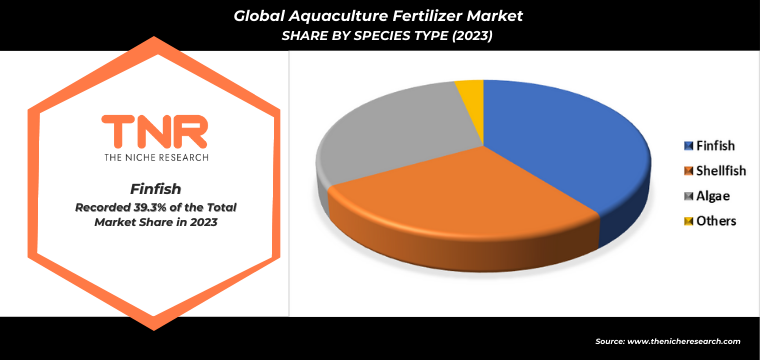
By application, marine aquaculture segment dominated the global aquaculture fertilizer market and is expanding with a CAGR of 11.9% over the forecast timeline. This growth is driven by the increasing demand for seafood, particularly from marine sources, and the expansion of marine aquaculture operations. Marine aquaculture requires specialized fertilizers to address the unique nutrient needs of saltwater environments and to enhance the growth of species such as fish, shellfish, and seaweed. The segment’s expansion is supported by technological advancements in fertilizer application, improved nutrient management practices, and the rising focus on sustainable seafood production. As marine aquaculture continues to grow, it drives significant demand for effective and tailored fertilization solutions.
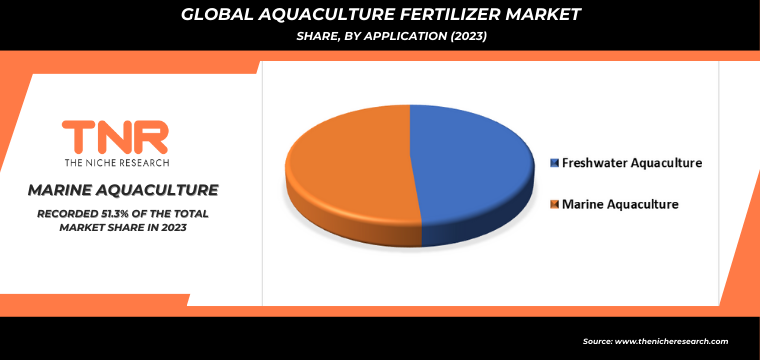
Online segment by distribution channel is set to be fastest growing segment in the global aquaculture fertilizer market with a revenue share of 42.7% in 2023. This rapid growth is driven by the increasing adoption of e-commerce platforms, which offer convenience, broader product selections, and competitive pricing. Online distribution allows aquaculture businesses to access a wide range of fertilizers from various suppliers, enhancing procurement efficiency. Additionally, the digitalization of the industry and growing preference for online shopping contribute to the segment’s expansion, making it a key player in the market’s evolving landscape.
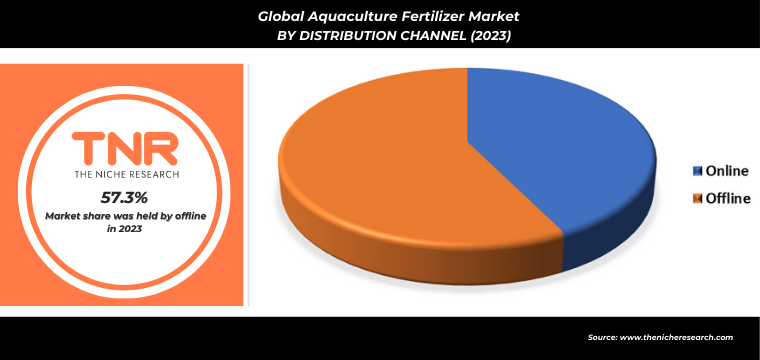
In 2023, Latin America solidified its position as the fourth leading region in the aquaculture fertilizer market. The region’s growing aquaculture sector, which includes significant production of fish, shrimp, and other aquatic species, fuels demand for effective fertilization solutions. Increased investments in aquaculture infrastructure and advancements in farming technologies have further boosted market growth. Latin America’s diverse aquatic ecosystems and favourable climatic conditions also contribute to the expansion of aquaculture operations. Rising consumer demand for seafood and supportive government policies promoting sustainable aquaculture practices are driving the adoption of fertilizers. These factors collectively position Latin America as a significant player in the global aquaculture fertilizer market.
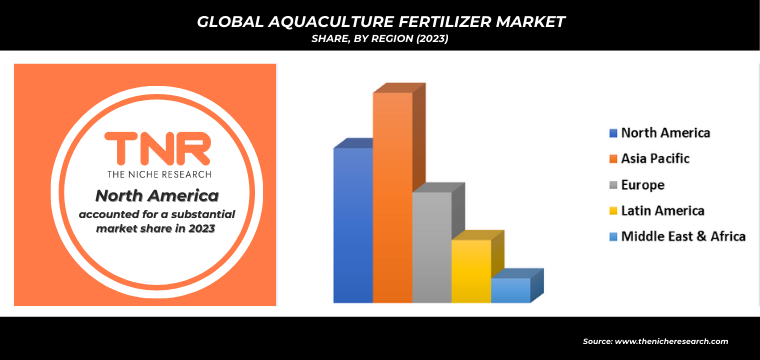
Competitive Landscape
Some of the players operating in the aquaculture fertilizer market are
- ICL Group Ltd.
- Koch Industries, Inc.
- Luxi Chemical Group Co. Ltd.
- Nutrien Limited
- OCP S.A.
- Saudi Basic Industries Corporation
- Sinofert Holdings Limited
- The Mosaic Company
- URALCHEM JSC
- Yara International ASA
- Other Industry Participants
Global Aquaculture Fertilizer Market Scope
| Report Specifications | Details |
| Market Revenue in 2023 | US$ 14.5 Mn |
| Market Size Forecast by 2034 | US$ 58.6 Mn |
| Growth Rate (CAGR) | 13.6% |
| Historic Data | 2016 – 2022 |
| Base Year for Estimation | 2023 |
| Forecast Period | 2024 – 2034 |
| Report Inclusions | Market Size & Estimates, Market Dynamics, Competitive Scenario, Trends, Growth Factors, Market Determinants, Key Investment Segmentation, Product/Service/Solutions Benchmarking |
| Segments Covered | By Type, By Species Type, By Application, By Distribution Channel, By Region |
| Regions Covered | North America, Europe, Asia Pacific, Middle East & Africa, Latin America |
| Countries Covered | U.S., Canada, Mexico, Rest of North America, France, The UK, Spain, Germany, Italy, Nordic Countries (Denmark, Finland, Iceland, Sweden, Norway), Benelux Union (Belgium, The Netherlands, Luxembourg), Rest of Europe, China, Japan, India, New Zealand, Australia, South Korea, Southeast Asia (Indonesia, Thailand, Malaysia, Singapore, Rest of Southeast Asia), Rest of Asia Pacific, Saudi Arabia, UAE, Egypt, Kuwait, South Africa, Rest of Middle East & Africa, Brazil, Argentina, Rest of Latin America |
| Key Players | ICL Group Ltd., Koch Industries, Inc., Luxi Chemical Group Co. Ltd., Nutrien Limited, OCP S.A., Saudi Basic Industries Corporation, Sinofert Holdings Limited, The Mosaic Company, URALCHEM JSC, Yara International ASA |
| Customization Scope | Customization allows for the inclusion/modification of content pertaining to geographical regions, countries, and specific market segments. |
| Pricing & Procurement Options | Explore purchase options tailored to your specific research requirements |
| Contact Details | Consult With Our Expert
Japan (Toll-Free): +81 663-386-8111 South Korea (Toll-Free): +82-808- 703-126 Saudi Arabia (Toll-Free): +966 800-850-1643 United Kingdom: +44 753-710-5080 United States: +1 302-232-5106 E-mail: askanexpert@thenicheresearch.com
|
Global Aquaculture Fertilizer Market
By Type
- Organic Fertilizers
- Inorganic Fertilizers
- Bio-fertilizers
By Species Type
- Finfish
- Shellfish
- Algae
- Others
By Application
- Freshwater Aquaculture
- Marine Aquaculture
By Distribution Channel
- Online
- Offline
By Region
- North America (U.S., Canada, Mexico, Rest of North America)
- Europe (France, The UK, Spain, Germany, Italy, Nordic Countries (Denmark, Finland, Iceland, Sweden, Norway), Benelux Union (Belgium, The Netherlands, Luxembourg), Rest of Europe)
- Asia Pacific (China, Japan, India, New Zealand, Australia, South Korea, Southeast Asia (Indonesia, Thailand, Malaysia, Singapore, Rest of Southeast Asia), Rest of Asia Pacific)
- Middle East & Africa (Saudi Arabia, UAE, Egypt, Kuwait, South Africa, Rest of Middle East & Africa)
- Latin America (Brazil, Argentina, Rest of Latin America)
Report Layout:
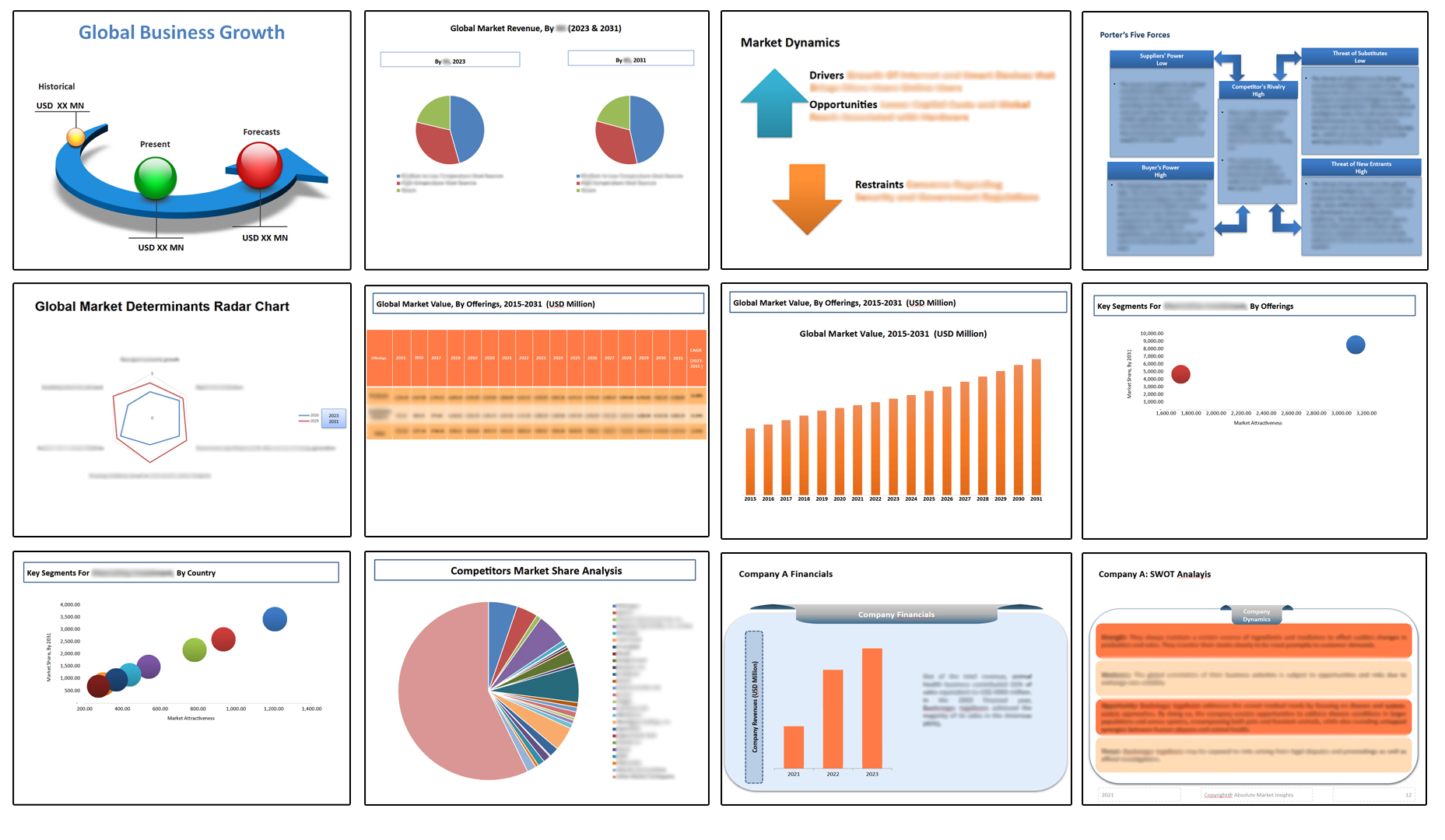
Table of Contents
**Exclusive for Multi-User and Enterprise User.
Global Aquaculture Fertilizer Market
By Type
- Organic Fertilizers
- Inorganic Fertilizers
- Bio-fertilizers
By Species Type
- Finfish
- Shellfish
- Algae
- Others
By Application
- Freshwater Aquaculture
- Marine Aquaculture
By Distribution Channel
- Online
- Offline
By Region
- North America (U.S., Canada, Mexico, Rest of North America)
- Europe (France, The UK, Spain, Germany, Italy, Nordic Countries (Denmark, Finland, Iceland, Sweden, Norway), Benelux Union (Belgium, The Netherlands, Luxembourg), Rest of Europe)
- Asia Pacific (China, Japan, India, New Zealand, Australia, South Korea, Southeast Asia (Indonesia, Thailand, Malaysia, Singapore, Rest of Southeast Asia), Rest of Asia Pacific)
- Middle East & Africa (Saudi Arabia, UAE, Egypt, Kuwait, South Africa, Rest of Middle East & Africa)
- Latin America (Brazil, Argentina, Rest of Latin America)
The Niche Research approach encompasses both primary and secondary research methods to provide comprehensive insights. While primary research is the cornerstone of our studies, we also incorporate secondary research sources such as company annual reports, premium industry databases, press releases, industry journals, and white papers.
Within our primary research, we actively engage with various industry stakeholders, conducting paid interviews and surveys. Our meticulous analysis extends to every market participant in major countries, allowing us to thoroughly examine their portfolios, calculate market shares, and segment revenues.
Our data collection primarily focuses on individual countries within our research scope, enabling us to estimate regional market sizes. Typically, we employ a bottom-up approach, meticulously tracking trends in different countries. We analyze growth drivers, constraints, technological innovations, and opportunities for each country, ultimately arriving at regional figures.Our process begins by examining the growth prospects of each country. Building upon these insights, we project growth and trends for the entire region. Finally, we utilize our proprietary model to refine estimations and forecasts.
Our data validation standards are integral to ensuring the reliability and accuracy of our research findings. Here’s a breakdown of our data validation processes and the stakeholders we engage with during our primary research:
- Supply Side Analysis: We initiate a supply side analysis by directly contacting market participants, through telephonic interviews and questionnaires containing both open-ended and close-ended questions. We gather information on their portfolios, segment revenues, developments, and growth strategies.
- Demand Side Analysis: To gain insights into adoption trends and consumer preferences, we reach out to target customers and users (non-vendors). This information forms a vital part of the qualitative analysis section of our reports, covering market dynamics, adoption trends, consumer behavior, spending patterns, and other related aspects.
- Consultant Insights: We tap into the expertise of our partner consultants from around the world to obtain their unique viewpoints and perspectives. Their insights contribute to a well-rounded understanding of the markets under investigation.
- In-House Validation: To ensure data accuracy and reliability, we conduct cross-validation of data points and information through our in-house team of consultants and utilize advanced data modeling tools for thorough verification.
The forecasts we provide are based on a comprehensive assessment of various factors, including:
- Market Trends and Past Performance (Last Five Years): We accurately analyze market trends and performance data from preceding five years to identify historical patterns and understand the market’s evolution.
- Historical Performance and Growth of Market Participants: We assess the historical performance and growth trajectories of key market participants. This analysis provides insights into the competitive landscape and individual company strategies.
- Market Determinants Impact Analysis (Next Eight Years): We conduct a rigorous analysis of the factors that are projected to influence the market over the next eight years. This includes assessing both internal and external determinants that can shape market dynamics.
- Drivers and Challenges for the Forecast Period:Identify the factors expected to drive market growth during the forecast period, as well as the challenges that the industry may face. This analysis aids in deriving an accurate growth rate projection.
- New Acquisitions, Collaborations, or Partnerships: We keep a close watch on any new acquisitions, collaborations, or partnerships within the industry. These developments can have a significant impact on market dynamics and competitiveness.
- Macro and Micro Factors Analysis:A thorough examination of both macro-level factors (e.g., economic trends, regulatory changes) and micro-level factors (e.g., technological advancements, consumer preferences) that may influence the market during the forecast period.
- End-User Sentiment Analysis: To understand the market from the end-user perspective, we conduct sentiment analysis. This involves assessing the sentiment, preferences, and feedback of the end-users, which can provide valuable insights into market trends.
- Perspective of Primary Participants: Insights gathered directly from primary research participants play a crucial role in shaping our forecasts. Their perspectives and experiences provide valuable qualitative data.
- Year-on-Year Growth Trend: We utilize a year-on-year growth trend based on historical market growth and expected future trends. This helps in formulating our growth projections, aligning them with the market’s historical performance.
Research process adopted by TNR involves multiple stages, including data collection, validation, quality checks, and presentation. It’s crucial that the data and information we provide add value to your existing market understanding and expertise. We have also established partnerships with business consulting, research, and survey organizations across regions and globally to collaborate on regional analysis and data validation, ensuring the highest level of accuracy and reliability in our reports.
